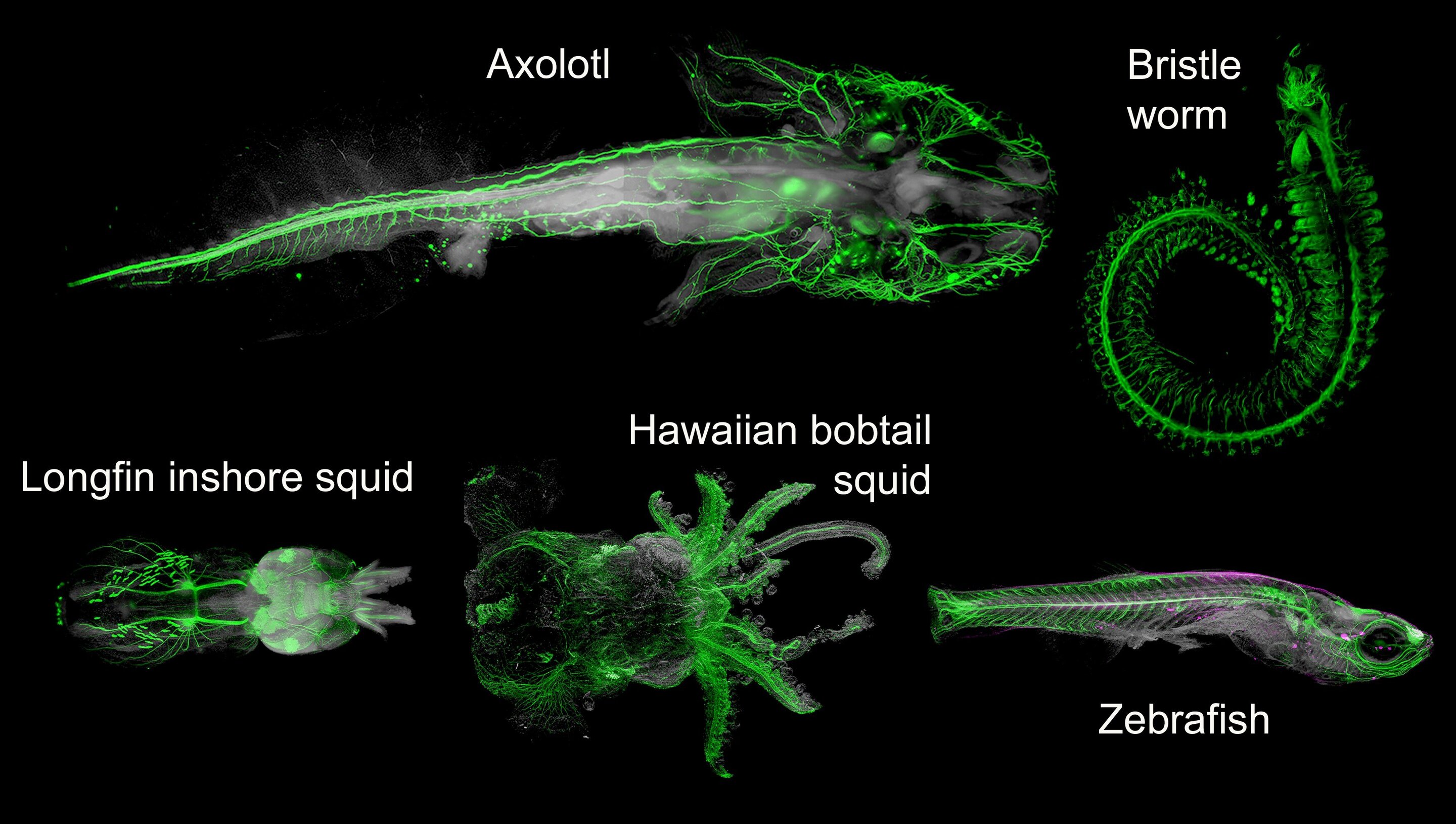Taking a deep look into animals
Date: 10.6.2020
Advances in neuroscience research and microscopy: a collaborative project driven by researchers of the Max Perutz Labs Vienna, a joint venture of the University of Vienna and the Medical University of Vienna, and the TU Wien (Vienna) allows researchers to look deep into organs and nervous systems of animals, ranging from squids and worms to fish and salamanders.
 In a team effort, researchers from the Max Perutz Labs, the Medical University of Vienna and the TU Wien (Vienna) and their collaborators have now developed a new method that combines tissue clearing with the removal of various pigment types as they are characteristic for most animals. This new approach – dubbed "DEEP-Clear" – has now been published in the international journal Science Advances.
In a team effort, researchers from the Max Perutz Labs, the Medical University of Vienna and the TU Wien (Vienna) and their collaborators have now developed a new method that combines tissue clearing with the removal of various pigment types as they are characteristic for most animals. This new approach – dubbed "DEEP-Clear" – has now been published in the international journal Science Advances.
This work – largely performed by Ph.D. student Karim Vadiwala in the lab of Florian Raible at the Max Perutz labs – showed that DEEP-Clear was compatible with the detection with a variety of important biomolecules, allowing to image specific proteins, DNA markers and RNA in intact specimens.
"The versatility of DEEP-Clear makes it a highly attractive tool to explore a range of animals for which standard tissue clearing techniques currently would not be sufficient," explains Karim Vadiwala (Max Perutz Labs).























